Fine-Tuning the Product Backlog for Agile Success
Explains how a well-ordered, refined Product Backlog guides Agile teams, supports goal alignment, and ensures value-driven product development through …
TL;DR; Keep your product backlog minimal but sufficient, ensuring it is clear and transparent for all stakeholders while also considering future needs to avoid surprises. Regularly review and reflect on completed work and unexpected issues to refine your backlog and adapt to changing circumstances. Aim for a balance that supports both current priorities and readiness for what lies ahead.


In the realm of product development , crafting an efficient Product Backlog is an endeavour akin to sculpting a masterpiece. Just as sculptors chisel away the excess marble to reveal the form within, product managers must carefully mould their backlog, ensuring it’s a lean inventory that reflects the unrealized value of the product. The Product Backlog must encapsulate our current aspirations for the product while being transparent and understandable to all stakeholders. It’s a living artefact that dynamically evolves with the product. However, we must also resist the temptation to create an overwhelming catalogue that loses its sharpness and becomes a weight dangling around the team’s neck.
In essence, the Product Backlog should be minimal yet sufficient. While keeping the backlog lean is imperative, it’s also prudent to consider future implications to mitigate surprises. Working in complex environments necessitates understanding the fine line between the unforeseen and the overlooked. Regular reflection on the accomplished work, the surprises encountered, and retrospective analysis of these surprises are essential.
Starting with the basics, the Product Backlog is a lean inventory of everything we understand is needed to enhance the product. It should be easy to grasp and must reflect the product’s unrealized value. The value that we believe is needed for the success of the product. Transparency and clarity are key – stakeholders and team members should be able to understand and articulate the contents of the backlog effortlessly.
When the backlog becomes a labyrinthine tome, it loses its efficacy.
While keeping the backlog lean is essential, one must not be myopic. Product development is not an isolated undertaking. It occurs within a complex, ever-changing environment. Therefore, the ability to look ahead and around is vital. However, what is the optimum distance one should look into the future? Here lies the conundrum. Looking too far ahead might lead to time wasted on obsolete aspects. Conversely, not looking far enough might result in missed opportunities. This necessitates finding the sweet spot – the Goldilocks zone.
We should look to find that Goldilocks zone for every aspect of the Product Backlog. What is the lead time for things that your team needs that others have? How long are the changes that we need likely to take? These answers will lead us to that minimal but sufficient answer. Will we always be right? Heck no! We will often be wrong, but hopefully, we can minimise the wrong and adapt to the changing context of the market and business needs.
As we traverse the product development landscape, surprises are inevitable. However, not all surprises are born equal. Some are genuine unknowns, while others are oversights masquerading as surprises. Dissecting these surprises afterwards and categorising them into those two buckets is crucial. This exercise can unveil insights into overlooked aspects and, more importantly, inform future strategies for better anticipating these surprises.
Perhaps it would be a good idea to meet regularly and reflect on the work done, our surprises, and how we could have handled them better.
Finally, it’s essential to recognize that the Product Backlog is not a static artefact. It’s akin to a sculpture that is continuously refined. As product managers and team members, we are the sculptors. Our chisels and hammers are the insights we gain from continuous reflection and learning. The final sculpture is a Product Backlog that embodies disciplined elegance – lean, sufficient, and just forward-looking enough to be helpful.
Is your product backlog a lean inventory of your team’s best guess at the unreleased value your product needs to maximise the ROI for your stakeholders?
Each classification [Concepts, Categories, & Tags] was assigned using AI-powered semantic analysis and scored across relevance, depth, and alignment. Final decisions? Still human. Always traceable. Hover to see how it applies.
If you've made it this far, it's worth connecting with our principal consultant and coach, Martin Hinshelwood, for a 30-minute 'ask me anything' call.
We partner with businesses across diverse industries, including finance, insurance, healthcare, pharmaceuticals, technology, engineering, transportation, hospitality, entertainment, legal, government, and military sectors.

SuperControl

Capita Secure Information Solutions Ltd

Brandes Investment Partners L.P.
Boxit Document Solutions

Illumina

Trayport

Akaditi

Slaughter and May

Kongsberg Maritime

Philips
CR2

Ericson

Big Data for Humans

Epic Games

ALS Life Sciences

Bistech

Higher Education Statistics Agency

Sage

Department of Work and Pensions (UK)

Ghana Police Service

Washington Department of Enterprise Services

Nottingham County Council

New Hampshire Supreme Court

Washington Department of Transport

Big Data for Humans

Epic Games

Trayport

Alignment Healthcare

DFDS

Boeing